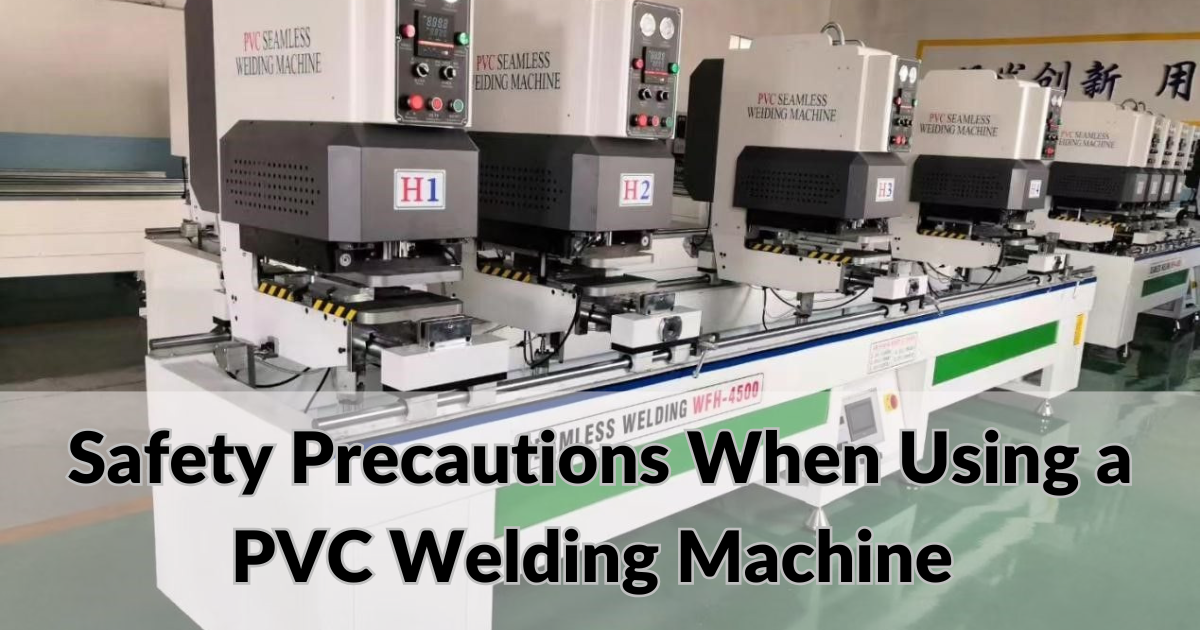
Safety measures in PVC welding start with a clear understanding of potential risks to minimize those risks for better welding outcomes. This guide explains everything you need to know about safety procedures which ensure PVC welding stays safe.
The essential function of PVC welding equipment exists in the joining of PVC materials. Industrial settings including manufacturing together with plumbing services and construction use PVC welding as their primary technique. PVC welded parts have extended life spans because welding creates durable structures. The welding process releases toxic fumes while demanding extreme heat levels which create substantial hazards for welders.
Protective equipment represents the foundation of welding safety and helps decrease substantially the chances of getting hurt. Protective equipment
Safety goggles: Safety goggles protect eyes from both flying sparks and breathing toxic fumes and reduce exposure to flame glare.
Thermal-resistant gloves: protection against burns during handling of hot liquids.
Protective clothing: Protective clothing incorporates flame-resistant fabric to produce a protective barrier for the skin.
Respiratory Protection: Face masks should be worn to protect from toxic fumes while welding and cutting.
Hearing protection: To safeguard against noise pollution workers must wear ear muffs and earplugs.
When PVC melts harmful fumes are released into the air. There is mainly chlorine gas and harmful substances within these fumes. The workspace needs proper ventilation to decrease significantly the possibility of respiratory diseases. There are basic steps individuals should follow which include
Working in an open space or area that has lot of windows which allow the air to pass.
Install a fume extraction system for filtering the toxic gases released.
Use fans to blow fumes away from the face.
Regular breaks should be taken to minimize extended exposure to fumes.
The successful use of a PVC welding machine requires performing regular inspections and maintenance checks to guarantee safe operation. Key steps include:
Examine electrical cords for damage then switch them if needed.
Look for signs of wear on the heating elements during your inspection.
All operational components must include proper lubrication and free movement.
The machine emergency shut-off system needs to undergo functional testing.
Regular cleaning with dust removal protects your PVC welding machine from breakdowns.
Proper usage of PVC welding machines requires strict adherence to existing operating procedures which protects user safety. Consider these best practices:
Read the Manual: Before operating the PVC welding machine read the provided manufacturer instructions.
Set Up a Safe Workspace: A safe working environment requires a clean area that has no clutter and no flammable materials and no obstacles.
Use the Right Temperature: Adjust your welding machine settings to match the right temperature needed for PVC materials to shield against thermal damage and substandard bonds.
Handle the Machine with Care: You should never touch hot surfaces because it's crucial to maintain your hands out of the path of moving machine parts.
Monitor the Process: Actively watch your process because it helps you spot any potential problems.
Turn Off After Use: You must both turn off and unplug your machine for safety reasons after completing work.
When welding PVC materials at high temperatures it becomes essential to have proper fire safety controls in place. Fire safety measures include:
A Class C fire extinguisher should remain accessible for electrical fire situations.
All combustible materials should be relocated outside of the welding space.
The maintenance of fire blankets as an emergency backup.
Educational training sessions should teach personnel appropriate responses to stop fire incidents in their tracks.
Operations with PVC welding equipment demand absolute electrical safety protection to protect users from dangerous sparks and dangerous electrical incidents. Follow these electrical safety tips:
Machines used should meet both safety standards and certifications.
Use extension cords only when they match the electrical rating of the machine.
Keep your hands dry before operating the machine and avoid these processes in moist environments.
The risk of electrical shock decreases when equipment operats with proper grounding methods.
Prior to maintenance tasks users should disconnect power supply.
Compelling PVC material processing methods combined with appropriate storage conditions minimize workplace risks and create hazard-free work areas. Consider the following:
PVC pipes and sheets need storage in dry cool areas sheltered from sunlight to avoid deformation.
Stack packaged materials with sufficient discipline to stop them from sliding off.
When handling heavy PVC components employees should use correct lifting approaches to reduce back injury risks.
Methods of material organization need to be followed to stop tripping accidents.
Workplace safety depends heavily on teams being ready to handle unexpected emergency situations. Ensure that you have an emergency response plan in place, which includes:
First aid kits readily available in the workspace.
The organization conducts employee training that teaches both response methods for injuries and accident management.
Maintain clearly designated emergency exits together with easily identifiable evacuation paths.
Emergency contact numbers should be kept within reach in case of mishaps.
Safety when operating PVC welding machines depends on consistent attention to detail and careful planning together with strict compliance with existing safety guidelines. Creating a safe workplace depends on your selection of appropriate protective equipment and your execution of good ventilation practices and your fulfillment of safe operating procedures alongside your complete readiness for emergency situations. Welding safety practices maintain both personal protection as well as operational efficiency throughout all welding missions